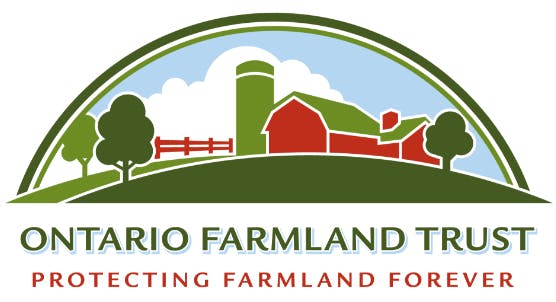
Late last month, the Bay of Quinte Green Party speaker series featured local farmers John and Jane Thompson and the Ontario Farmland Trust’s Martin Straathof on The Future Farming.
Ms. Thompson noted, “in many ways farm families have not changed. 97 per cent of small farm families in Canada today inherited the farm.”
And yet that simple family farm model is under threat of extinction. It is now next to impossible to choose to become a farmer without first inheriting the land — and that land, like the farmers who farm it, is rapidly disappearing.
According to the County Foundation’s Vital Signs Report, 8.2 per cent of cropland acreage in Ontario has been lost in the past ten years; between 2012-2022 over 7,000 acres disappeared.
Statistics Canada reports that 320 acres of farmland are lost in Ontario alone every day. As Mr. Straathof noted, “That means in 100 years there won’t be any left.”
A finite resource
“Land is a finite resource and as the quantity is depleted the cost increases. Land becoming more scarce makes it radically unaffordable,” said Mr. Straathof.
“We need make sure farmland is available for future generations and make sure it is financially accessible.”
“Farmland is seen to be at odds with housing now, but there are ways to engage in community development that both allows for more housing and preserves precious farmland.”
Mr. Straathof pointed to gaps in the policy framework that leave farmland unsupported, with no planning for the future, or for the next generation, in place.
“The land-use planning system horizon for housing goes past 2050; but there is no horizon like that for our food system. There are pressures to make sure of housing development, but there is no pressure or attention to ensure the agri-food sector is viable as well.”
Meanwhile, 40 per cent of farmers will retire in the next ten years, and over half, 66 per cent, do not have a succession plan in place.
This is where the Ontario Farmland Trust comes in. It protects and preserves farmland through conservation agreements and other forms of protection, such as a land trust. It solves the complex issue of both keeping farmland and making that land accessible to new farmers.
“If we don’t have farmers we don’t have farmland,” said Mr. Straathof.
“There need to be supports, such as affordable pathways for people who want to get into agriculture. The U.S. has robust land access programs and pathways. Agricultural organizations have been calling for the establishment of access programs for at least 20 years in Canada.”
As The County Foundation’s Executive Director Dominique Jones notes, “Education and community engagement are critical.”
Land Stewardship in the County
In 2023, the County Foundation and the Farmland Trust hosted an information session for residents and farmers about diminishing farmland, and the legal mechanism of a farmland trust to protect it.
“We had over 60 people attend,” said Ms. Jones. “And as a direct result of that engagement, the Farmland Trust has six local farming families looking to put their land into trust.”

The County is now the site of a cluster initiative in land stewardship.
“This awareness and engagement are very interesting from the Farmland Trust’s perspective. It is leading to a cluster initiative, in which PEC is a pilot project in the province,” said Ms. Jones.
Those six farms will join three already protected farms in PEC, one of which navigated the trust process with a grant from the County Foundation.
Four of the six interested farm families have started the process, and together mean that over 500 acres of farmland in PEC is being put into trust.
“This is a great example of a community reading the data, seeing how rapidly farmland is diminishing, and engaging in a mechanism to protect it for future generations.” said Ms. Jones.
By the end of the decade, at least nine local farms, representing thousands of acres of farmland, will have been put into a farmland trust, a legal mechanism that ensures those acres can only ever be farmland.
Economies of Scale
The cluster of farm families in PEC is to the Farmland Trust an opportunity to scale up.
It can cost $60,000 to put a single farm into trust. An ecological assessment, land survey, appraisal, and legal fees are just the beginning. The Farmland Trust stewards the land in perpetuity, making sure remains farmland, forever. Land in trust can be sold if it remains farmland.
Several properties going into trust at once creates an opportunity to save on some of the appraisals, assessments, surveys, and legal fees. Total costs are spread out over three or four —or more — farms.
The cluster in PEC is part of a larger initiative, to protect 40 farms and an additional 10,000 acres in Ontario by 2029.
“With seven farms either already or in the process of being put into trust, PEC represents a large portion of newly entrusted farmland,” said Ms. Jones.
The County Foundation is working with the Ontario Farmland Trust to protect four of those properties as part of the cluster initiative, and plans to invest $20,000 in the project in 2024.
It has secured half that amount and is looking for the rest.
“If you want to financially contribute you can play a big role in protecting farmland. 500 acres —that’s a great investment,” said Ms. Jones. The County Foundation is actively seeking donors for the project.
See it in the newspaper